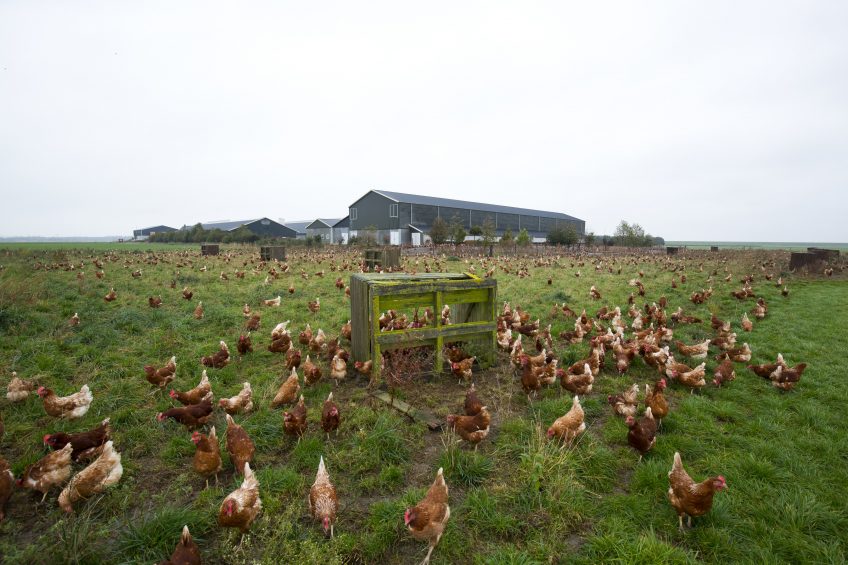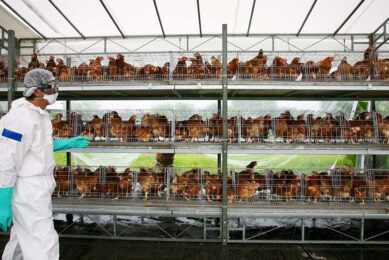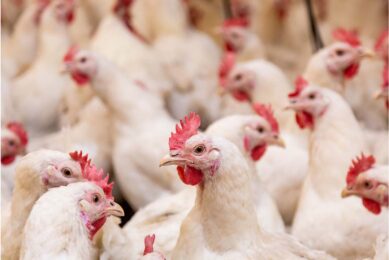Thinking outside the bird

Canadian researchers tested a new approach in Avian Influenza surveillance by going beyond wild bird sampling and focusing on wetland sediments. Poultry World reports.
In 2014 and 2015, an outbreak of highly-pathogenic AI (HPAI) hit the west coast of Canada and many other locations in North America. The virus breached 11 farms in British Columbia in December 2014 and reached 3 farms in Ontario by April 2015. By July of that year, over 200 farms across 15 US states had been infected. In all, about 49 million birds died from the illness or had been euthanised, and the overall cost of the outbreak was estimated to be over USD$ 3 billion.
Current AI surveillance programmes in North America centre on PCR (polymerase chain reaction) testing of individual wild birds since they act as a reservoir for the disease. However, these programmes did not detect the HPAI virus in Canada or the USA prior to the outbreak, only after it was underway. “In short, there is a gap in the current surveillance effort,” explains Dr William Hsiao, a senior scientist at the BC Centre for Disease Control (BCCDC), who also holds assistant and adjunct professorships at the University of British Columbia and Simon Fraser University. “Wild birds do not usually get systemic infection from AI virus like domestic poultry, so in live wild bird surveillance programmes, based on random capture and with a low positivity rate, AI virus-positive birds can be missed.” He adds that testing more wild birds is also not likely to be a good solution going forward as it is expensive and potentially disruptive to the ecosystem.
New approach
In 2015, British Columbia’s Ministry of Agriculture (BC MoA) therefore sought the development of another approach, working with various partners to set up a pilot study that would instead employ a genomics (gene mapping) technique called ‘targeted resequencing’ on samples taken from wetland areas where wild birds congregate – and potentially shed AI virus in their faeces. The idea for this approach collectively stemmed from close interactions between members of BC MoA, the BCCDC and the Canadian Wildlife Health Cooperative (CWHC). The results were very impressive – the scientists were able to achieve a 24% rate of detection of the virus compared to a less than a 1% rate using the established method.
The research project is officially called ‘Genomic Analysis of Wetland Sediment as a Tool for Avian Influenza Surveillance and Prevention,’ and represents a combined investment of over $ 2.5 million from funders and delivery partners including Genome BC (part of Genome Canada), BC MoA, the Canadian Food Inspection Agency, Agriculture and Agri-Food Canada, the Investment Agriculture Foundation of BC, and the Sustainable Poultry Farming Group.
For his part, Dr Hsiao mainly focuses on the genomics and sequencing analysis aspects of the research. Co-lead investigators Dr Chelsea Himsworth and Dr Jane Pritchard (leader of Veterinary Science & Diagnostics and director respectively at the BC MoA Animal Health) bring the veterinarian perspective to the studies, and Dr Natalie Prystajecky (head of Environmental Microbiology at the BCCDC Public Health Laboratory) brings the environmental microbiology perspective.
Overall, the entire team encompasses a great deal of skill sets, being made up of veterinarian scientists, environmental microbiologists, genomic scientists, bioinformatic specialists, virologists and ecologists. Dr Hsiao says each team member brings with them domain-specific knowledge of how to tackle the challenging problem of detecting AI virus from environmental samples, and is also embedded in his or her organisation, which helps promote uptake and policy changes that may stem from this research effort.

Inside the analysis
Wetland sediment samples are currently being taken by the team on a monthly basis from 3 wetlands in BC and on a yearly basis from another 18. Genomic sequencing is applied to the samples to detect influenza virus genetic material (RNA), but this comes with many thorny challenges. Firstly, the problem of water diluting the viruses so the amount of viruses in each sample is very low. “Moreover, there are many other organisms in the sediment,” Dr Hsiao explains, “so finding the viruses in the sediment samples is like finding a needle in a haystack. We therefore had to develop a molecular method to enrich for viral genomic material from the environmental samples.
To do this, the team works with a company called Fusion Genomics of Burnaby, BC, which has developed probes that ‘hybridise’ (latch onto) to the AI virus genome. The scientists can then pull out millions of these sequences and subsequently sequence them, then identify the sequences through comparison against a large computerised database. “The technological challenges that we had to overcome were significant,” says Dr Hsiao. “This approach also represents a paradigm shift in surveillance programmes and focuses on integrating different factors [such as bird movements] affecting AI virus transmission.” “Additional research,” adds co-investigator Dr Craig Stephen (executive director at CWHC) “is looking at how we can scan social media and use publicly-available information on variables that might influence exposure to wild bird AI to help better prepare (as opposed to predict) for AI.”
Dr Craig notes that surveillance is more than diagnostic testing, but encompasses the assessment of the test results with an understanding of the environment in which they were taken and communicating it in a way that respects the different information needs of the human, animal and environmental health communities. “The results of this work has relevance to government decision makers, poultry producers and even the public, so a team is needed to understand how to most effectively communicate the results in the most useful manner to each of these audiences,” he explains.
Refining technology and methodology
Currently research goals include refining the AI sediment surveillance technology and methodology, validating the sediment surveillance approach in the field, and identifying the optimal combination of AI surveillance techniques for maximum efficiency and efficacy. “These are the steps that we have to go through and ultimately we will be working with our end-users to implement this method,” says Dr Hsiao, “so it can be used as an early warning system to improve biosecurity measures ahead of the incursion of AI (into the commercial poultry production sector). Ultimately, the research findings will be taken up to develop and implement a new Provincial Waterfowl AI Surveillance Program.”
In terms of refining the technology and methodology, Dr Hsiao says their method must be sensitive enough to detect AI from the environment but it also has to be specific enough that it doesn’t raise false alarms. Besides doing validation and achieving the proper level of accuracy, the team must also address cost and speed of testing. “The per-sample cost of our approach is still very high – about CAD$ 500 per wetland sample,” Dr Hsiao says. “We will continue to refine our method to make it cheaper, aiming for $ 50 to $ 100 per wetland sample, and faster. We also need to compare this approach more carefully with existing wild bird-based surveillance efforts.”
Years of work
In terms of the future, Dr Hsiao says there is currently “quite a bit of interest” from national and international public health and environmental health organisations to work with the team in trying this approach, but that it’s hard to estimate how long it will take until the approach is adopted as an official surveillance programme in Canada or elsewhere. “We plan to do a larger trial with partners in the CWHC network within the next 2 years,” he says. “If successful, we can see wider adoption in five years.” Dr Hsiao notes that the highly-sensitive and high-resolution genomic-based surveillance tools that his team and others are developing are allowing scientists access to more information about AI, which is very much needed. “We still don’t have a very good idea how these viruses move between human, bird, swine and other animal populations,” he explains. “We also have poor understanding of how these viruses change over time to cause severe diseases, versus less severe diseases such as seasonal flu.”
AI outbreaks updateA recent World Organization for Animal Health (OIE) report describes the HPAI situation in the past five years as “significant” for 3 reasons:
From January 2013 to May 2018, OIE reports that 68 countries/territories were affected by HPAI in domestic birds, with 7011 outbreaks and 12 subtypes present in domestic bird populations. This spring, from March to May 2018, OEI reports that domestic birds were affected in 15 countries and territories: Bangladesh, Bhutan, Bulgaria, Cambodia, China, Chinese Taipei, Iraq, Italy, Korea, Mexico, Nepal, Netherlands, Saudi Arabia, South Africa and Togo. “65 new HPAI outbreaks in domestic birds were reported from March to May 2018, in Africa, Asia, the Americas and Europe, involving six different subtypes.” Poultry World recently reported that there were no outbreaks of bird flu in commercial UK flocks over the winter of 2017/2018, and as of May 25th, the UK poultry sector retains its OIE disease-free status. In total over the winter, 101 wild birds were found dead of AI across 20 separate sites but this has tailed off. Media reports in the week of June 25th 2018 indicate there are currently multiple outbreaks of HPAI in Russia and in China. |
Join 31,000+ subscribers
Subscribe to our newsletter to stay updated about all the need-to-know content in the poultry sector, three times a week. Beheer
Beheer








 WP Admin
WP Admin  Bewerk bericht
Bewerk bericht